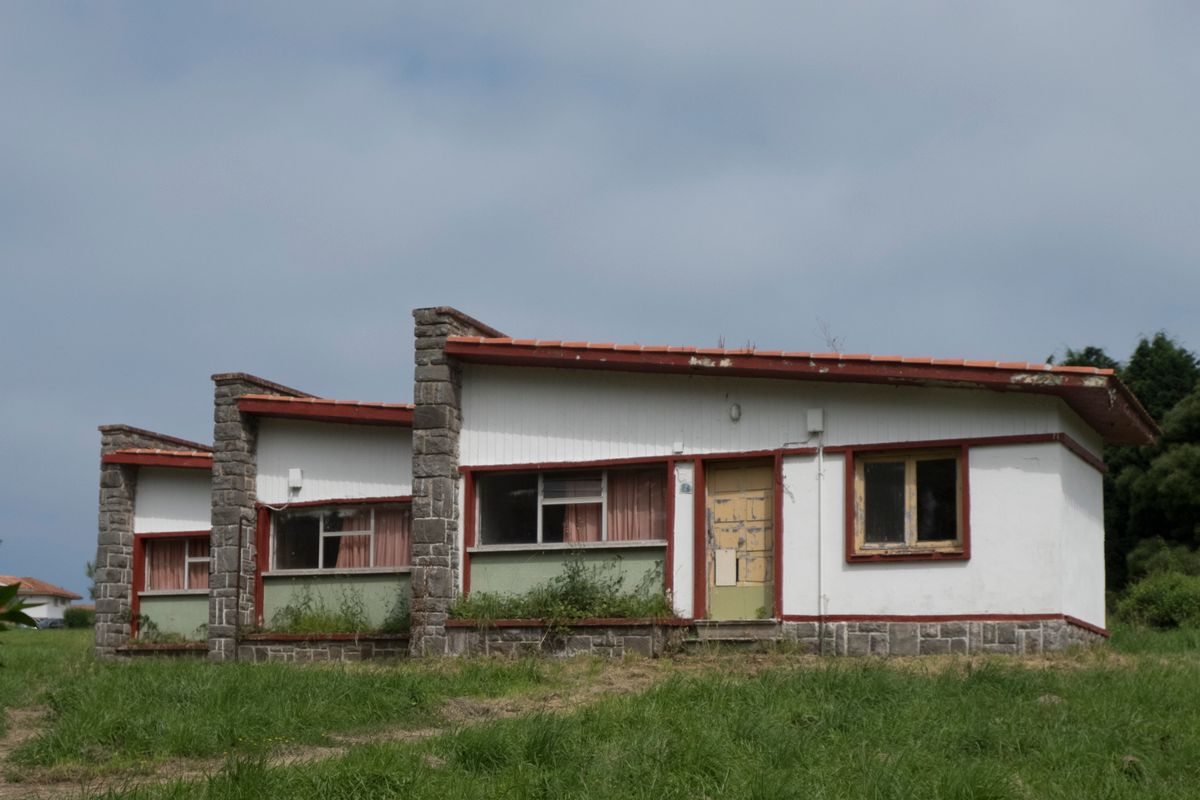About
In 1954, the Francoist regime inaugurated Perlora Ciudad de Vacaciones—a luxury resort built for workers to enjoy a subsidized holiday by the sea. Before tourism was ubiquitous, the resort gave all classes of workers and their families the chance to travel and relax under the paternalistic eye of the state.
At the height of its popularity, it would host up to 2,000 workers for 15 days at a time. Companies had leases on different villas and would raffle off the popular holiday homes to well-behaved employees. Workers belonging to agricultural or fishermen guilds would also be able to stay in the now torn-down main residence. All stays included full room and board.
The resort stretches over 50 acres and its winding roads lead to three separate beaches. Around 150 of its buildings still stand, including dozens of quirky mid-century villas, some of which make overly literal nods to the Asturian hórreo, an iconic granary seen across the Northern Spanish region. Other buildings have more architectural merit, including a brutalist Catholic Church, the two dining halls, and the angular wood-covered reception hall. Some of the buildings are crumbling, but others remain in relatively decent condition.
Although the resort finally stopped hosting vacationing workers in 2005, in the summer, this joyful ghost town still comes to life. Chances are you’ll see couples parked outside certain villas that they call their own. Other visitors use the picnic spaces for barbecues, go to its beaches or just stroll around, thoughts jumping between fantasies of what the place used to be and what it still could become.
Related Tags
Know Before You Go
Perlora, Vacation City is less than a 30-minute drive from Asturias’s three biggest cities. If traveling from Oviedo, you can take a direct bus to the nearby town of Candás and take a nice seaside stroll to the crumbling resort. For a more romantic journey, there’s a picturesque train that connects directly with Gijón and Avilés. If going by car, there is a giant parking lot on the space that used to hold the main hotel-like building, which was torn down in 2005. A security guard patrols the area to stop people from going inside the buildings.
Published
July 13, 2022


























